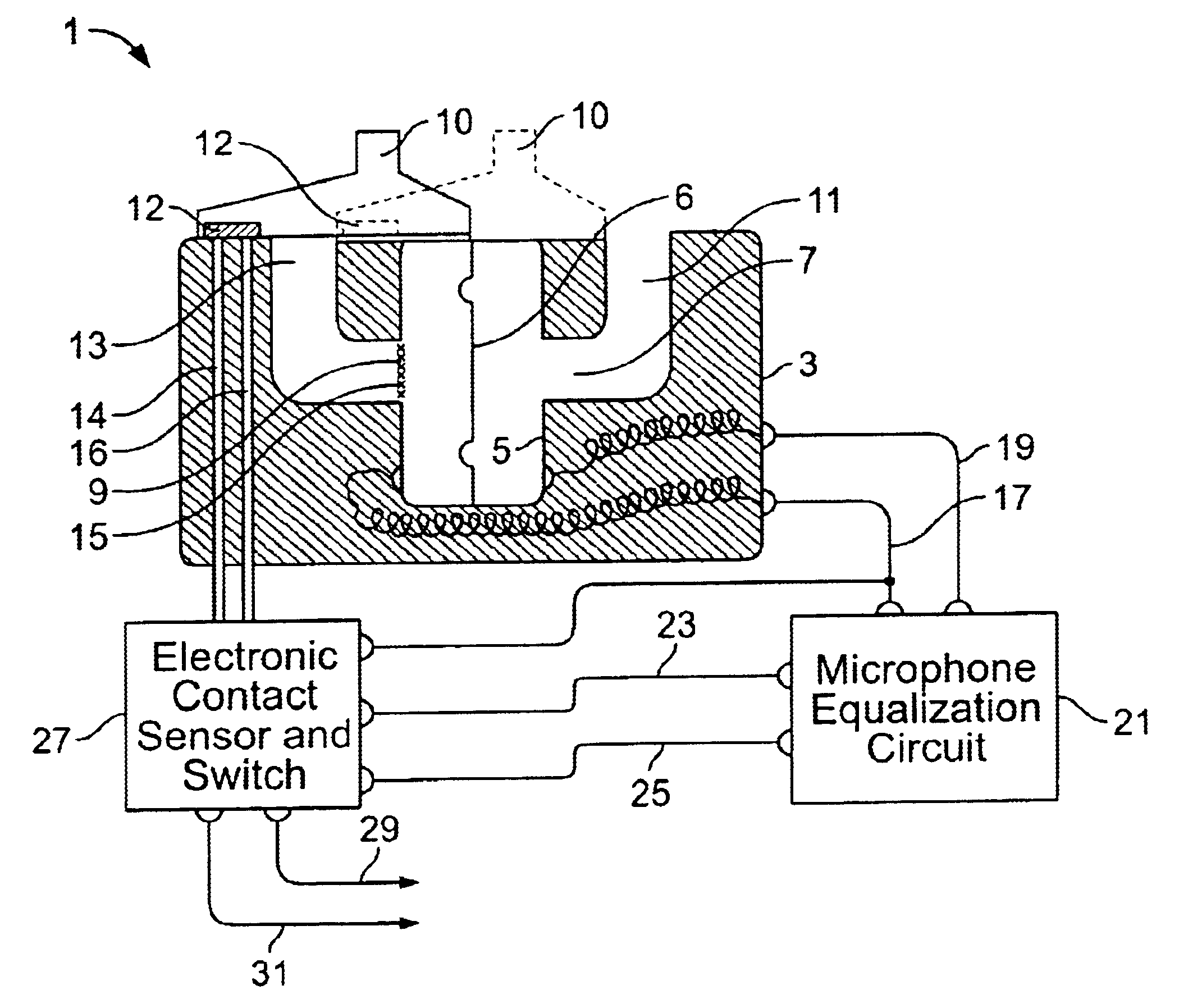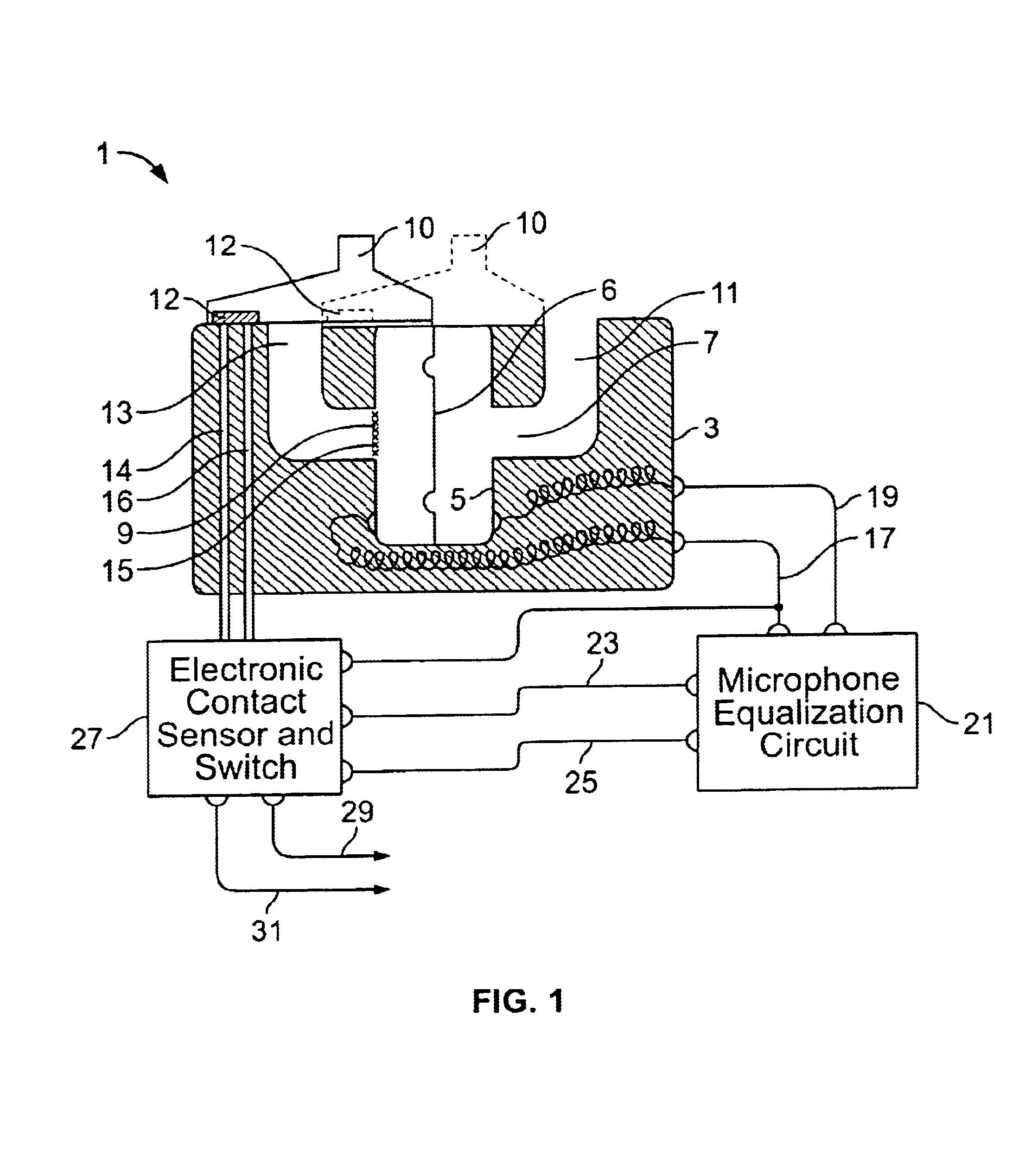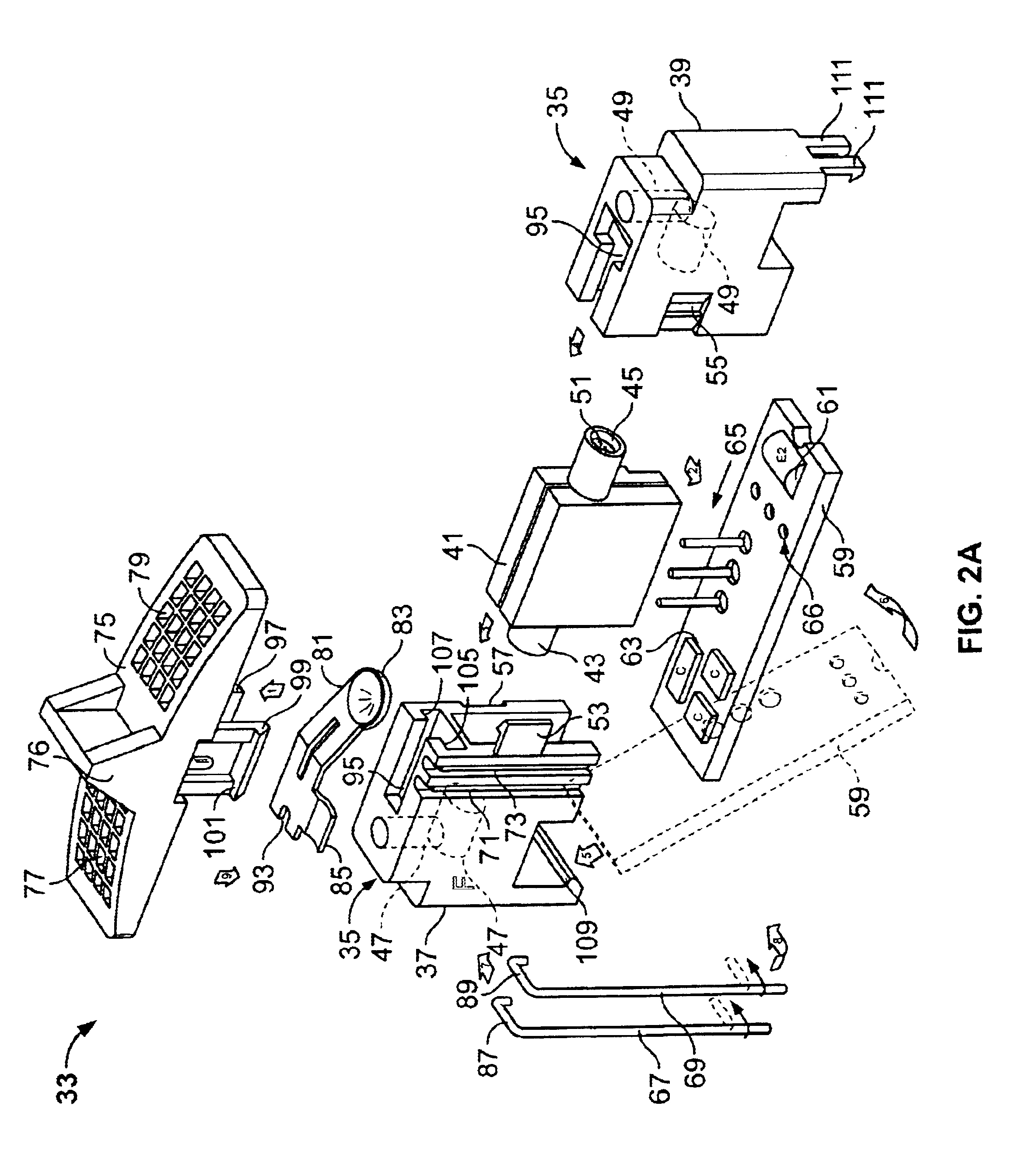Microphone for hearing aid and communications applications having switchable polar and frequency response characteristics
a technology of frequency response and microphone, which is applied in the direction of frequency response correction, piezoelectric/electrostrictive transducer, transducer type, etc., can solve the problems of acoustically complex killion reference, inability to independently choose the frequency response of the microphone in the directional and omni-directional modes, and prior art killion reference is acoustically complex and consequently difficult to implement. , to achieve the effect of reducing environmental
- Summary
- Abstract
- Description
- Claims
- Application Information
AI Technical Summary
Benefits of technology
Problems solved by technology
Method used
Image
Examples
Embodiment Construction
FIG. 1 illustrates one embodiment of a microphone assembly according to the present invention. Microphone assembly 1 comprises a microphone housing 3 that encloses a microphone cartridge 5 therein. Microphone cartridge 5 has a diaphragm 6, a front sound inlet port or opening 7 and a rear sound inlet port or opening 9. Front sound inlet port 7 and rear sound inlet port 9 engage front sound inlet tube 11 and rear sound inlet tube 13, respectively, of microphone housing 3. An acoustic resistor 15 is located in rear sound inlet port 9. Acoustic resistor 15, however, may instead be located in rear sound inlet tube 13.
Microphone assembly 1 further comprises an actuator switch 10 that modifies the directional characteristics of the microphone assembly 1. Specifically, when the actuator switch 10 is in a directional position represented by the dotted lines in FIG. 1, the rear sound inlet tube 13 is uncovered and the microphone assembly 1 acts as a directional microphone. When the actuator s...
PUM
 Login to View More
Login to View More Abstract
Description
Claims
Application Information
 Login to View More
Login to View More - R&D
- Intellectual Property
- Life Sciences
- Materials
- Tech Scout
- Unparalleled Data Quality
- Higher Quality Content
- 60% Fewer Hallucinations
Browse by: Latest US Patents, China's latest patents, Technical Efficacy Thesaurus, Application Domain, Technology Topic, Popular Technical Reports.
© 2025 PatSnap. All rights reserved.Legal|Privacy policy|Modern Slavery Act Transparency Statement|Sitemap|About US| Contact US: help@patsnap.com



